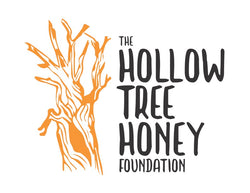Gardening for Native Bees in Utah and Beyond
The following is an excerpt from a fact sheet released by The Utah State University Extension and Utah Plant Pest Diagnostic Laboratory
Do You Know?
- 900 species of native bees reside in Utah.
- Some wild bees are superb pollinators of Utah’s tree fruits, raspberries, squashes, melons and cucumbers.
- Few of our native bees have much venom or any inclination to sting.
- Our native bees use hundreds of varieties of garden flowers, many of them water-wise.
- A garden plant need not be native to attract and feed native bees.
Utah is home to more than 20 percent of the 4,000+ named species of wild bees that are native to North America. Except for bumblebees and some sweat bees, our native bees are solitary, not social, many with just one annual generation that coincides with bloom by their favorite floral hosts. In contrast, the familiar honey- bee is highly social, has perennial colonies, and was brought to North America by settlers from Europe. Regardless of these differences, however, all of our bees need pollen and nectar from flowers. The sugars in sweet nectar power their flight; mother bees also imbibe some nectar to mix with pollen that they gather. Pollen is fortified with proteins, oils and minerals that are essential for the diets of their grub-like larvae back at the nest.
Our flower gardens can become valuable cafeterias for local populations of diverse native bees. In our cities and towns, native plant communities have been displaced by pavement, buildings and lawns. In the countryside, grain and hay crops likewise offer our native bees little food. Because bees find their favorite flowers by their color or scent, a bee garden can also be appealing to the homeowner. Many of these flowering species are surprisingly easy to grow.
Some people are fearful of being stung if they attract native bees to their yard. In our 25 years of watching bees at flowers, we have yet to be stung by any species of non-social bees native to North America. We have been stung handling honey bees or bumble bees at their colonies. These social bees are the ones that deliver the most painful stings. But even then, we’ve never been stung when just watching them at flowers.
The table of garden plants for native bees (page 4 of PDF) can help guide home gardeners in Utah and across North America to genera of flowering plants whose species will please gardener and bee alike. In turn, pollination services by bees set bumper crops of all of our tree fruits and some vegetables too. Native bees also give hours of pleasant entertainment and distraction as you follow their foraging rounds or their amorous pursuits at your flowers.
The list consists of plant genera, many of whose species both attract native bees and are available from standard or native seed companies or plant nurseries. In a few cases, particularly valuable plants for native bees are listed though not yet available commercially. If just beginning your Utah bee garden, consider species from the genera that are bolded in blue italics. These represent broadly available, adaptable, and dependable plant genera whose blooms reliably attract native bees. Many of the genera in the list will not be universally adaptable to all climates, soils, and irrigation regimes; you will need to make informed decisions from among the genera in the list for your local use. If you are trying water-wise (or xeriscape) plants from seed, autumn seeding is beneficial, as many need a cool wet period to elicit germination. Note that the vast majority of choices are perennials, in contrast with the many traditional annual bedding plants. You will need to be patient during their first year of establishment, weed regularly, and provide occasional water as they develop their extensive root systems.
Be aware of the invasive tendencies of some plant species in your locale. The bachelor’s button or cornflower (Centauria cyanus), for instance, is a well-behaved garden plant across much of the U.S., but in parts of the Pacific Northwest, it has become a naturalized, undesirable weed. If in doubt, please check with your county Extension agent or the Utah Department of Agriculture, or visit one of the Web sites listed below for introductory weed information.
invader.dbs.umt.edu/Noxious_Weeds, is a searchable listing of all U.S. weeds, by state www.invasive.org/weedus, “Invasive Plant Atlas of the US,” contains images wiki.bugwood.org/Invasipedia, lists close to 200 species with detailed information on each
Some popular garden flowers are missing from the list, such as tulips, petunias and marigolds. These and some other garden flowers have, through years of artificial breeding and selection, lost whatever attraction they may have had for bees. That’s no reason not to plant and enjoy them; they just won’t feed bees.
The list is a work in progress. If you find errors, oversights or useful refinements, I will be happy to consider your suggestions for modification so long as it retains its current form. You may disseminate the list or modify your copy of it for local needs or your personal preferences as you see fit. Happy bee-ing!!
